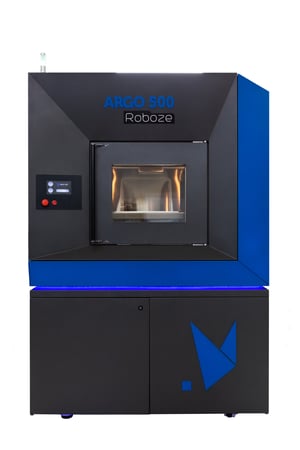Heat and Flame Resistance Make Polyetherimide Useful in Additive Manufacturing
In my last in-depth blog in February, I discussed the properties, advantages and challenges of 3D printing of polyetheretherketone, know as PEEK. This time around, let's look into a different super polymer: Ultem. In FFF 3D printing, Ultem is the trademarked brand name of the polyetherimide (PEI) filament produced by SABIC who acquired the material formulation and name via an acquisition of General Electric Plastics Division in 2007. Similar to PEEK, Ultem is a semitransparent thermoplastic with high strength and heat resistance that exhibits good insulating properties. Additionally, Ultem also exhibits a very high dielectric characteristic (or K value). As such, Ultem has found success in electrical and electronic applications including printed circuit boards, semiconductor equipment, capacitors, etc. It has also specifically found great favor in enclosed cabins because of its rating as V-0 in UL94 inherent flame resistance and its Flame, Smoke and Toxicity (FST) OSU rating of 55/55. In other words, it is highly resistant to burning and doesn’t emit toxic smoke or other gases when exposed to flames. As you can imagine, this is very important in pressurized aviation and subaquatic environments.

Matching Materials to the Purpose
In comparison with PEEK, Ultem offers both advantages and disadvantages. While it is usually significantly less expensive than PEEK, it does not bring the strength the PEEK brings. SABIC’s Ultem exhibits an ultimate tensile strength of 70 megapascals (MPa) for the XZ axis and 65 MPa for the XY axis. The same company’s PEEK provides a tensile strength of 89 and 86 MPa, respectively. In other words, Ultem is a bit more brittle than PEEK. Additionally, Ultem provides a Flexural Strength of 110 MPa while the PEEK product has a rating of 120 MPa. With temperature, the results are similar with Ultem displaying a heat deflection of 1500C compared to 1600C for PEEK. However, the resistivity quality of Ultem is significantly higher than PEEK. Ultem shows a high volume resistivity at 8*1015 Ω*cm while PEEK exhibits a volume resistivity of 1017 Ω*cm making Ultem a better insulator than PEEK and has a dielectric constant of 3.0 – 3.2. With both materials you can significantly change the mechanical and electrical properties with the addition of carbon fiber, but for the analysis above I have compared the natural SABIC filament (1.75mm dia.) products without Carbon Fiber or other additives.
Another significant difference in Ultem versus PEEK is the required printing environment. In order to effectively print large Ultem parts you must print in a heated chamber that essentially anneals the material as you print. If you have a thin part (i.e., a thin Z axis height) you can print Ultem on a heated build plate that in essence creates this environment, but any significant Z axis will quickly degrade the part quality as you increase print height. With PEEK, you can successfully print a large part on a heated build plate and anneal the part in a post print oven to achieve maximum mechanical properties and appearance.
In summary then, is it fair to say PEEK is a better product than Ultem? That, of course, depends! Ultem is still a very strong polymer with excellent strength and heat deflection. It is a better insulator than PEEK and has higher K values for dielectric properties making it an excellent material for capacitors and similar uses. Also, as long as your system can successfully print Ultem, it is a much less expensive product costing less than ½ the price for PEEK products. Further, its rating for flammability, smoke and toxicity is as good as PEEK, making it an excellent material for connectors, insulators and any other electrical/electronic application within compressed air or environmentally challenged environments.
NCS Partners with Roboze for Printing with Super-Polymers
NCS has partnered with Roboze to provide the printing of super polymers, including Ultem 9085F. From its beginning, Roboze has developed one of the best engineered set of systems for FFF printing available in the world today. The system is well designed to provide prints with very high resolution and accuracy, and because of their patented beltless rack and pinion drives and print head management systems, can accurately and reliably produce a printed part time and time again. Specifically to provide the necessary heat and hardness needed to print super-polymers like Ultem 9085F, they have developed their HVP extruder system to handle the stresses required to reliably print high viscosity polymers. Their systems have integrated filament drying systems to assure quality prints and filament integrity. For their flagship Argo series of printers the print chamber is heated via a unique convection system that assures consistent heat across the entire chamber, eliminating the need for a separate annealing step and increasing part quality and integrity. NCS Technologies and Roboze can deliver the capability to print incredible parts from this outstanding material.
Questions about Ultem, PEEK or Other Super-Polymers? Please Contact Us!
In future blogs, I will discuss other interesting additive manufacturing challenges, including the use of metals and other plastics in a range of industries. If you have specific questions about Ultem 9085F, PEEK, or other materials used in 3D Printing, please reach out to me at 703.848.5169.
For more immediate information about Roboze and NCS, please go here: https://www.ncst.com/products/categories/3d-printing/roboze

